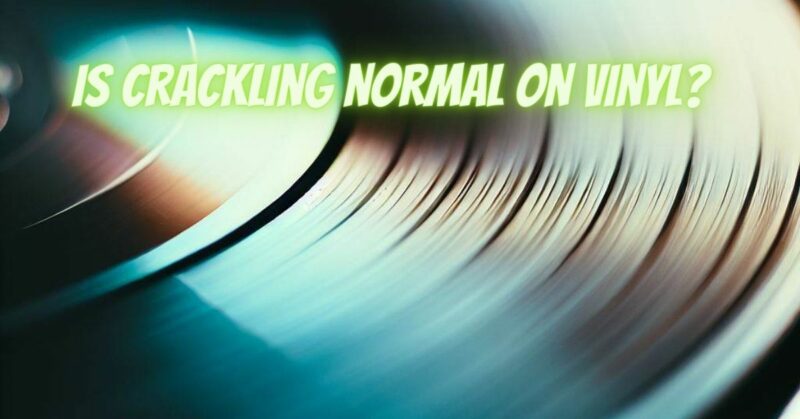Vinyl records are beloved for their warm sound and nostalgic appeal, but occasional crackling and surface noise can leave collectors questioning whether it is normal. In this article, we will delve into the phenomenon of crackling on vinyl records, explore its causes, and shed light on ways to manage and minimize surface noise.
- Nature of Vinyl Records: Vinyl records are analog audio recordings that capture the sound in grooves pressed onto the surface of the vinyl. These grooves can be susceptible to various forms of surface noise, including crackling, popping, and hissing.
- Causes of Crackling: Crackling on vinyl records can have multiple causes. Dust, dirt, and debris can accumulate in the grooves over time, leading to crackling sounds during playback. Additionally, minor imperfections or damage to the record surface, such as scratches or static buildup, can contribute to the presence of crackling.
- Vinyl Record Wear and Age: Over time, vinyl records naturally wear down due to repeated use, handling, and exposure to environmental factors. As a result, crackling can become more prevalent on older or heavily played records. This wear can also be influenced by the quality of the pressing and the care taken in handling and storing the records.
- Cleaning and Maintenance: Regular cleaning of vinyl records is essential to reduce crackling and surface noise. Using a proper record cleaning solution, a soft brush, or a record cleaning machine can help remove dust and debris from the grooves, resulting in a cleaner playback experience.
- Proper Turntable Setup: Ensuring that your turntable is properly set up and calibrated is crucial for minimizing crackling. Issues such as improper tracking force, misaligned cartridge, or incorrect anti-skate settings can contribute to excessive surface noise. Regular maintenance of your turntable, including stylus replacement when necessary, can also help mitigate crackling issues.
- Quality of the Recording and Pressing: It is important to note that crackling may also be present in the original recording or the pressing of the vinyl itself. Poorly mastered or low-quality pressings can introduce crackling or surface noise that is not related to the condition of the record.
- Acceptable Levels of Surface Noise: While crackling and surface noise are generally undesirable, it is important to recognize that some level of surface noise is inherent to the vinyl medium. Occasional crackling during quiet passages or between tracks is considered normal, particularly in older or well-played records. However, excessive crackling that persists throughout the entire record may indicate issues with the record’s condition or playback setup.
Conclusion:
Crackling on vinyl records is a common occurrence and can be attributed to various factors such as dust, wear, and imperfections on the record surface. Regular cleaning, proper turntable setup, and maintenance are essential for minimizing crackling and surface noise. While some level of surface noise is considered normal and part of the vinyl experience, excessive crackling may indicate underlying issues that require attention. By understanding the causes of crackling and taking proactive measures, you can enjoy your vinyl collection with improved sound quality and reduced surface noise.


